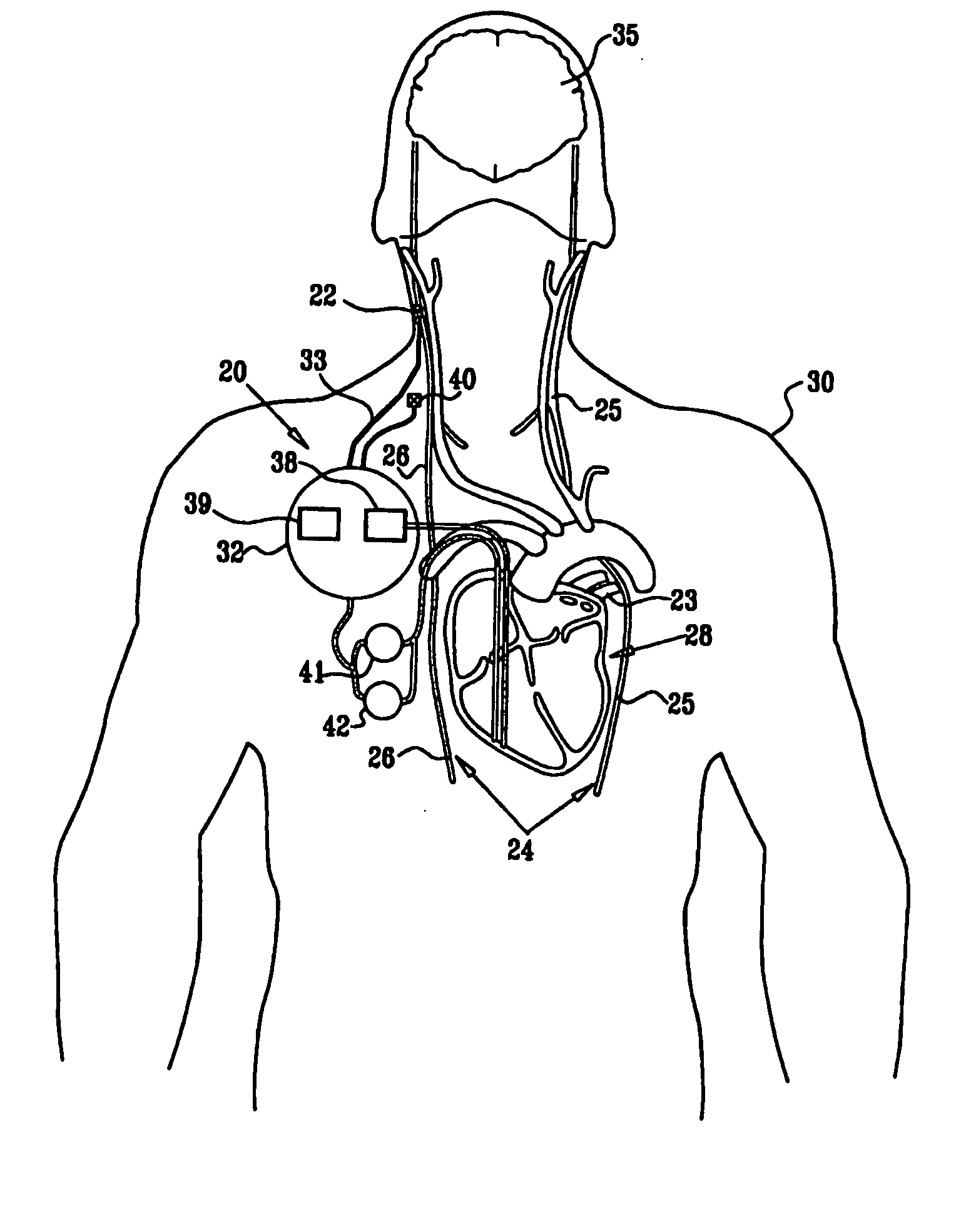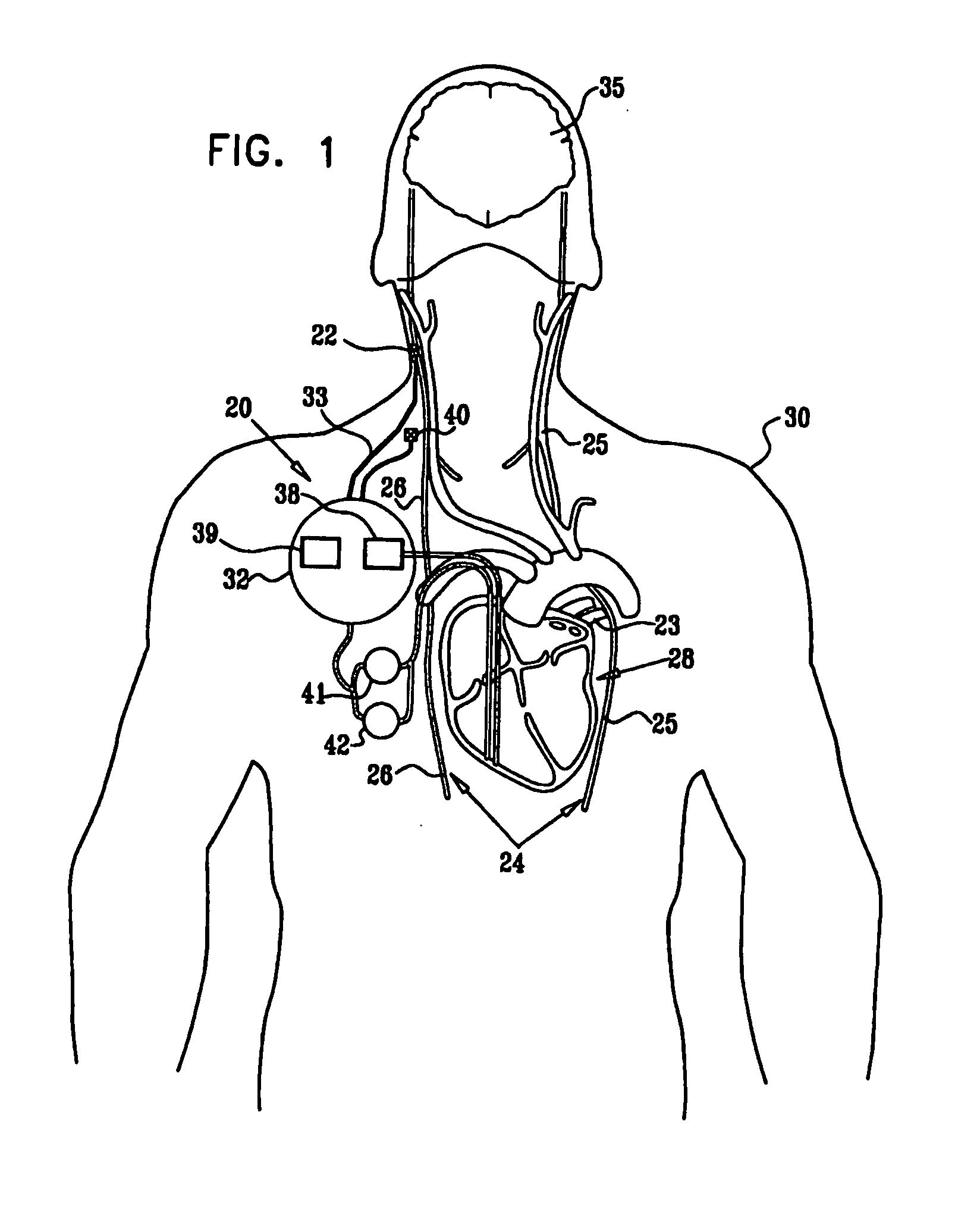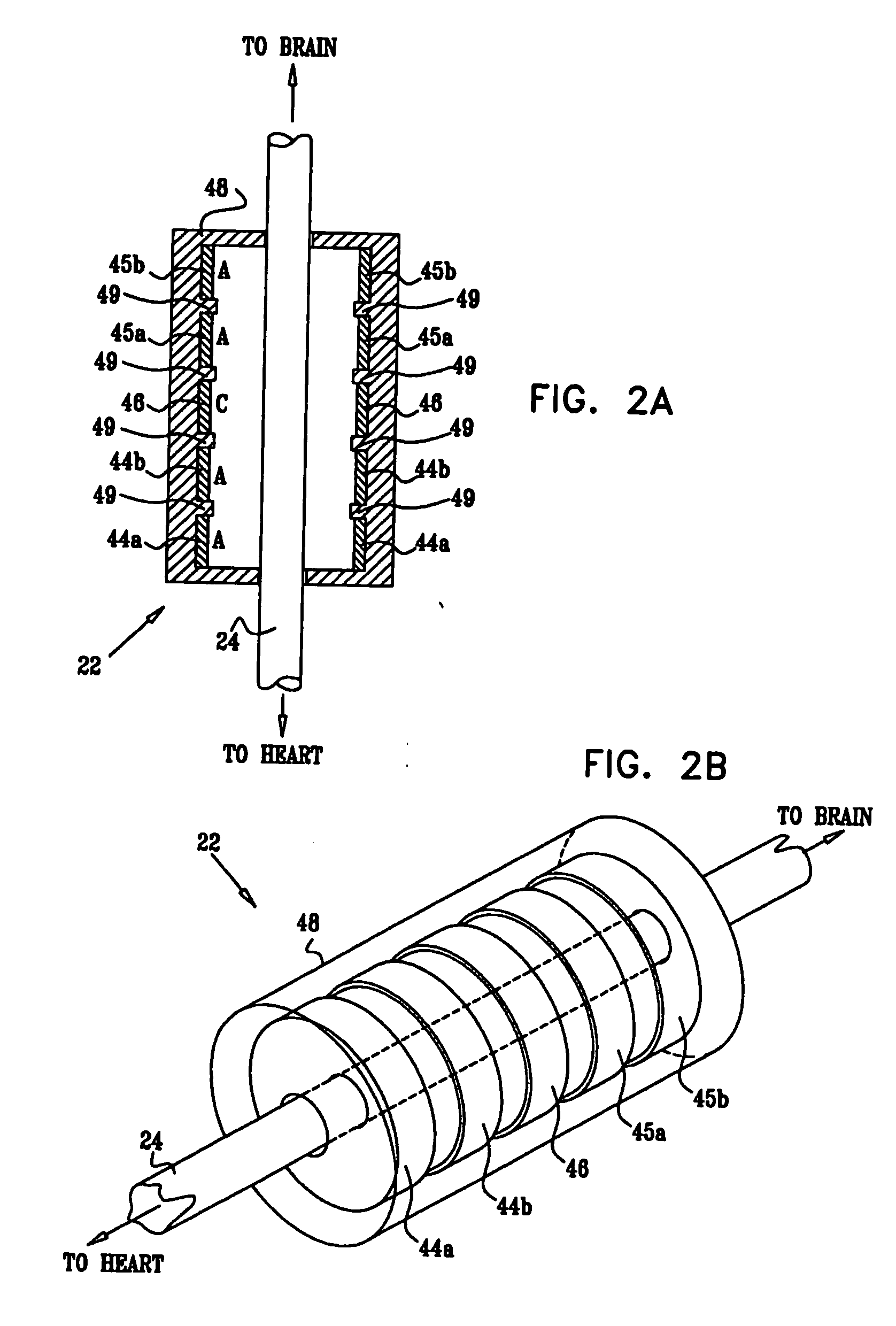Minimal-heart-rate reduction parasympathetic stimulation
a parasympathetic stimulation and heart rate reduction technology, applied in the field of patients' treatment, can solve the problems of reduced drug effectiveness, synergistic effect, synergistic effect, etc., and achieve the effect of preventing electrical remodeling of the atrium
- Summary
- Abstract
- Description
- Claims
- Application Information
AI Technical Summary
Benefits of technology
Problems solved by technology
Method used
Image
Examples
Embodiment Construction
[0327]FIG. 1 is a schematic illustration of apparatus 20 for treating a patient 30, in accordance with an embodiment of the present invention. Apparatus 20 comprises at least one electrode device 22, which is applied to a vagus nerve 24 (either a left vagus nerve 25 or a right vagus nerve 26), which innervates a heart 28 of patient 30. Apparatus 20 further comprises an implanted or external control unit 32, which typically communicates with electrode device 22 over a set of leads 33. For some applications, apparatus 20 comprises two electrode devices 22, one of which is applied to left vagus nerve 25, and the other to right vagus nerve 26.
[0328] For some applications, as described hereinbelow, control unit 32 is adapted to drive electrode device 22 to apply signals to vagus nerve 26. The control unit configures these signals to induce the propagation of efferent nerve impulses towards heart 28. The control unit typically configures the signals based on the particular application, b...
PUM
 Login to View More
Login to View More Abstract
Description
Claims
Application Information
 Login to View More
Login to View More - R&D
- Intellectual Property
- Life Sciences
- Materials
- Tech Scout
- Unparalleled Data Quality
- Higher Quality Content
- 60% Fewer Hallucinations
Browse by: Latest US Patents, China's latest patents, Technical Efficacy Thesaurus, Application Domain, Technology Topic, Popular Technical Reports.
© 2025 PatSnap. All rights reserved.Legal|Privacy policy|Modern Slavery Act Transparency Statement|Sitemap|About US| Contact US: help@patsnap.com



